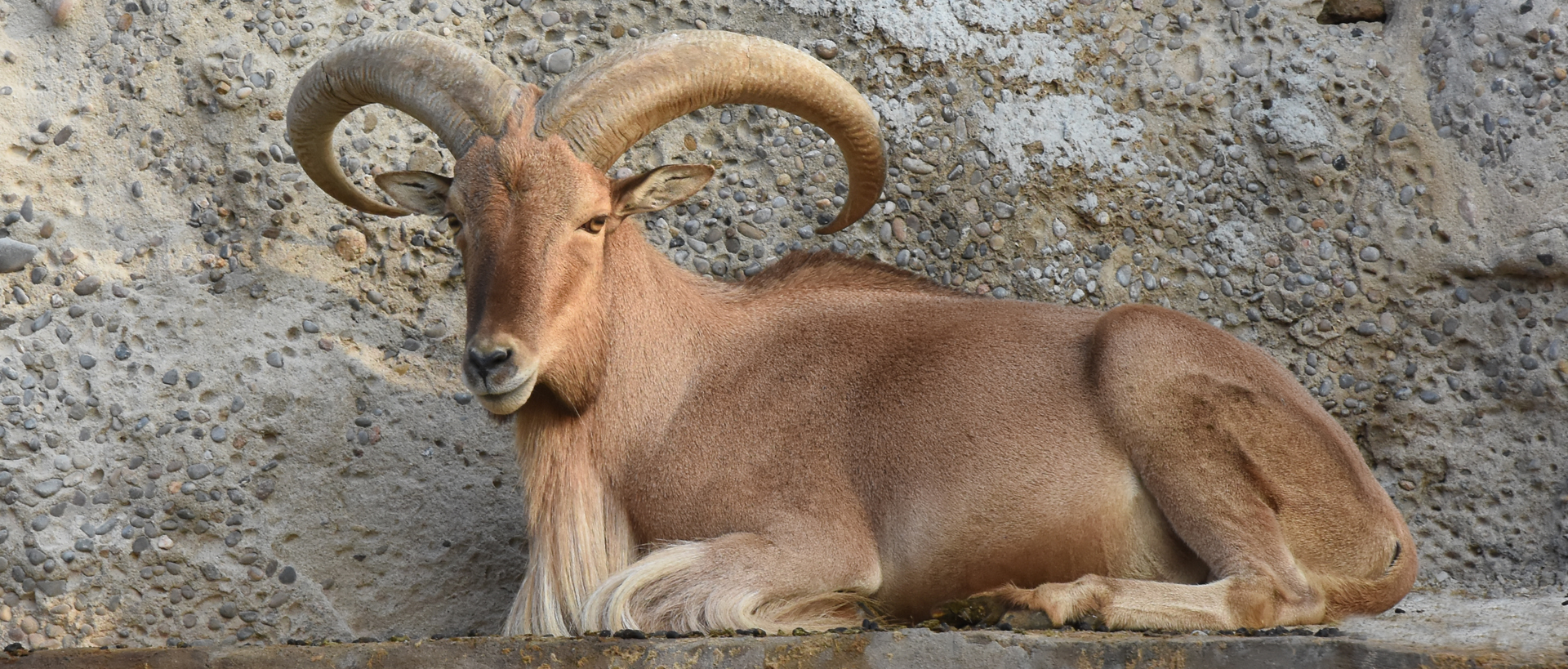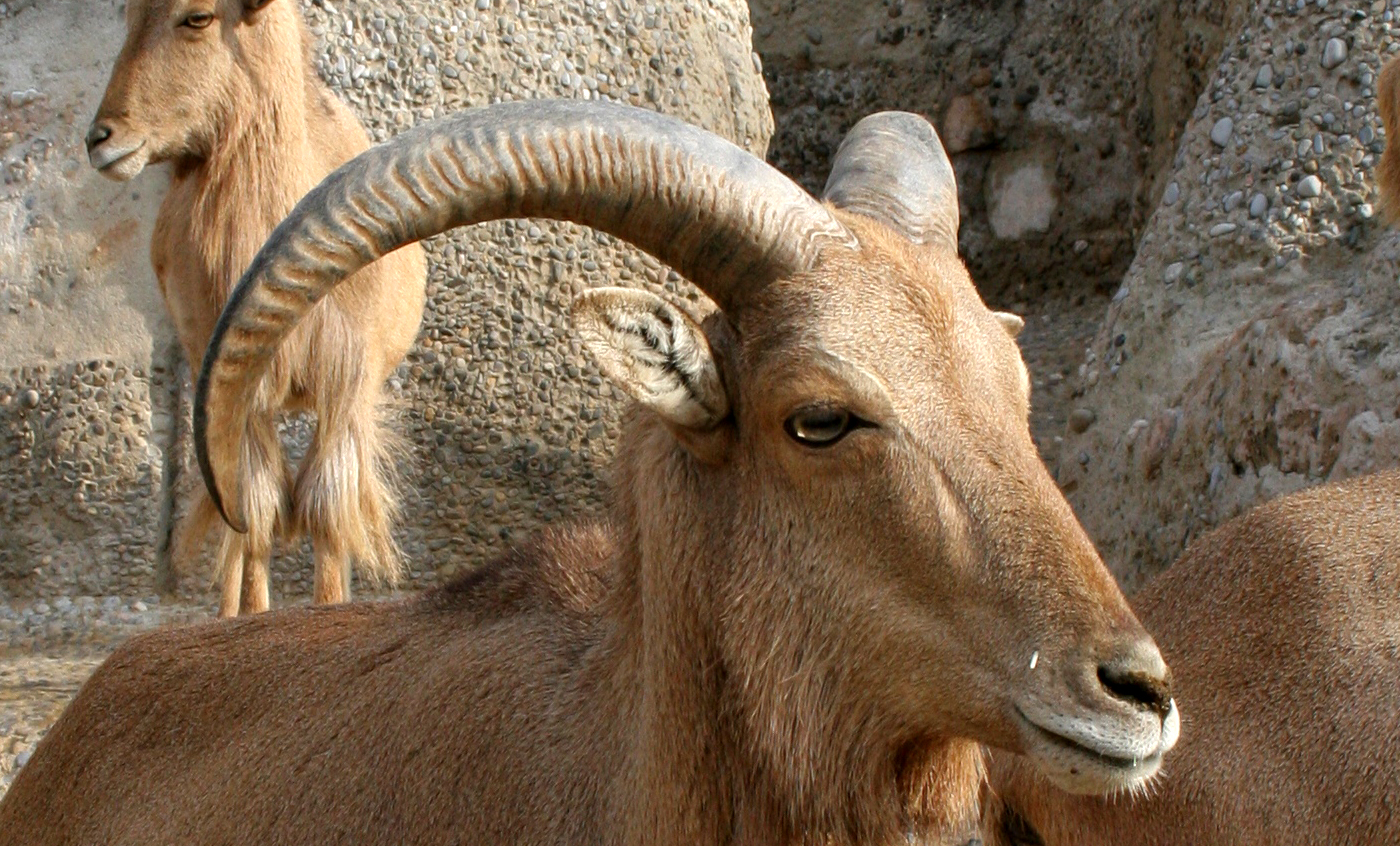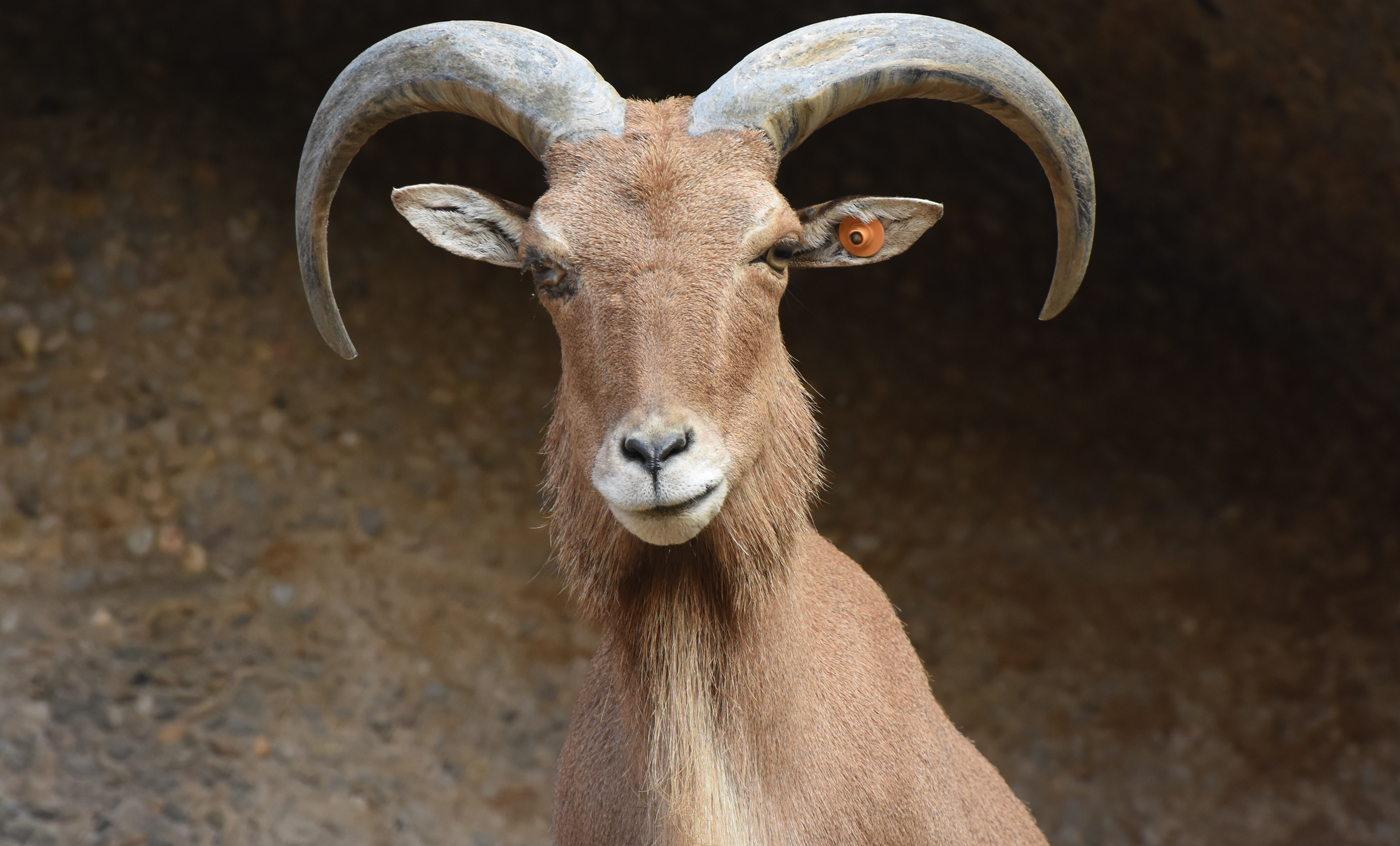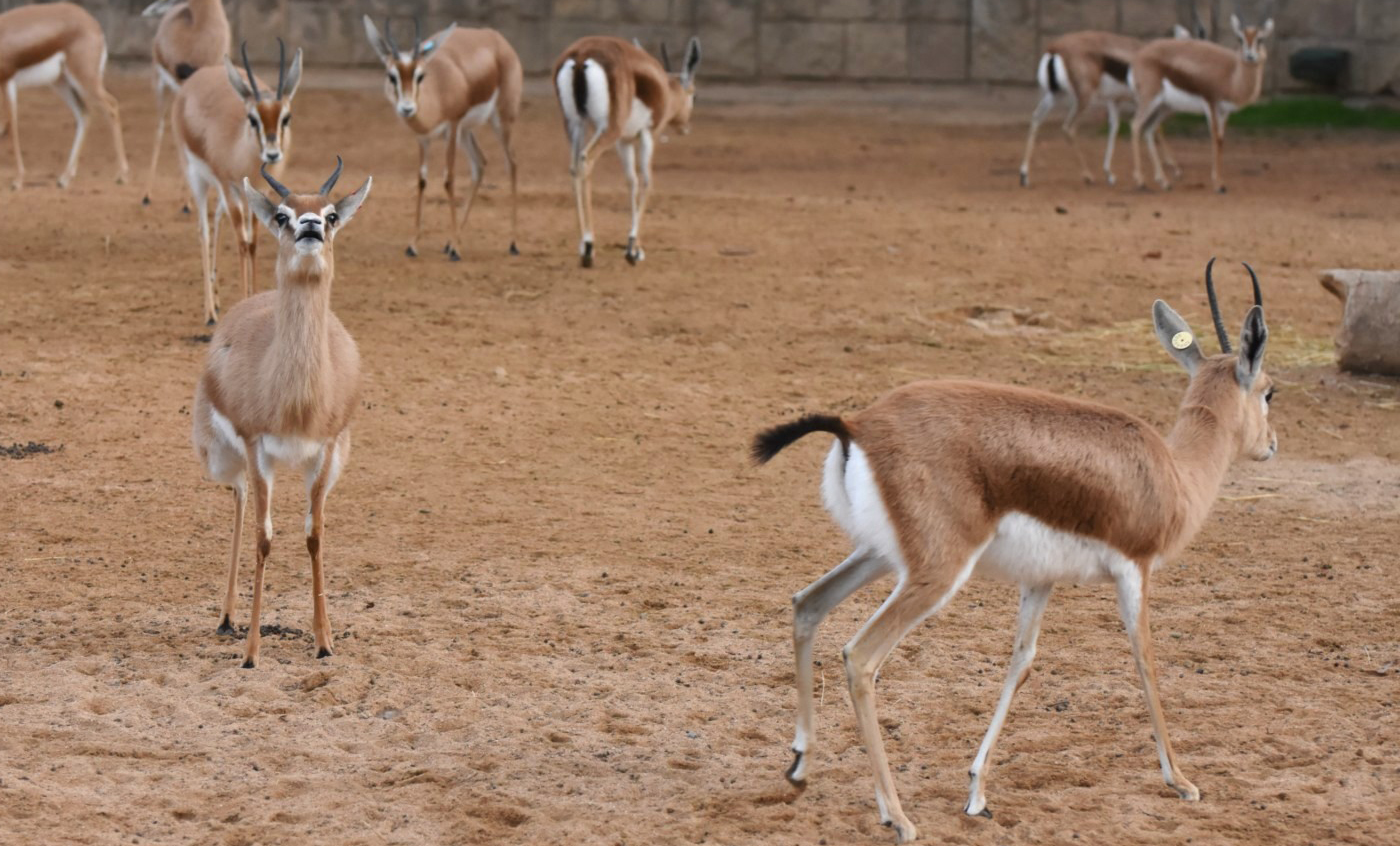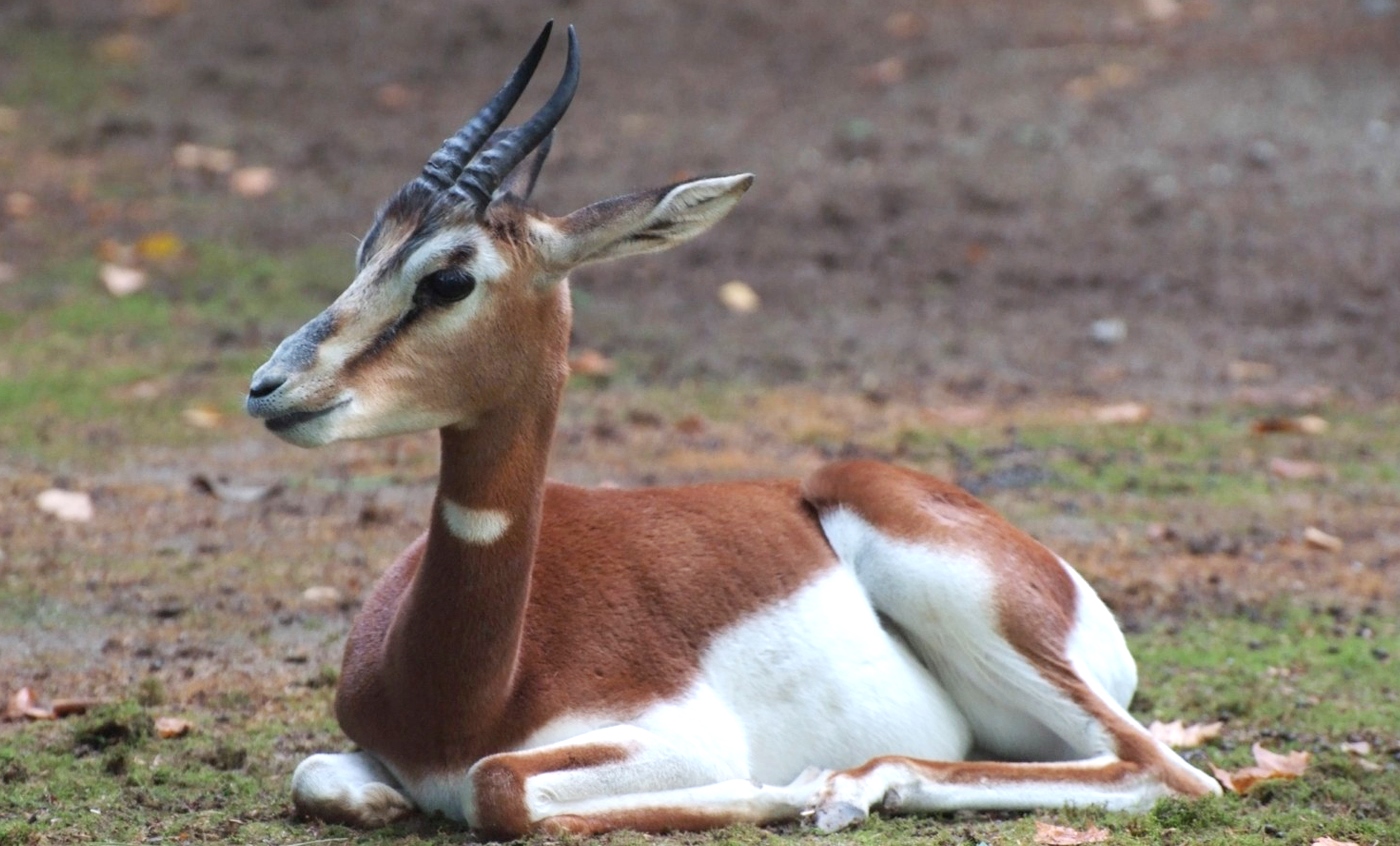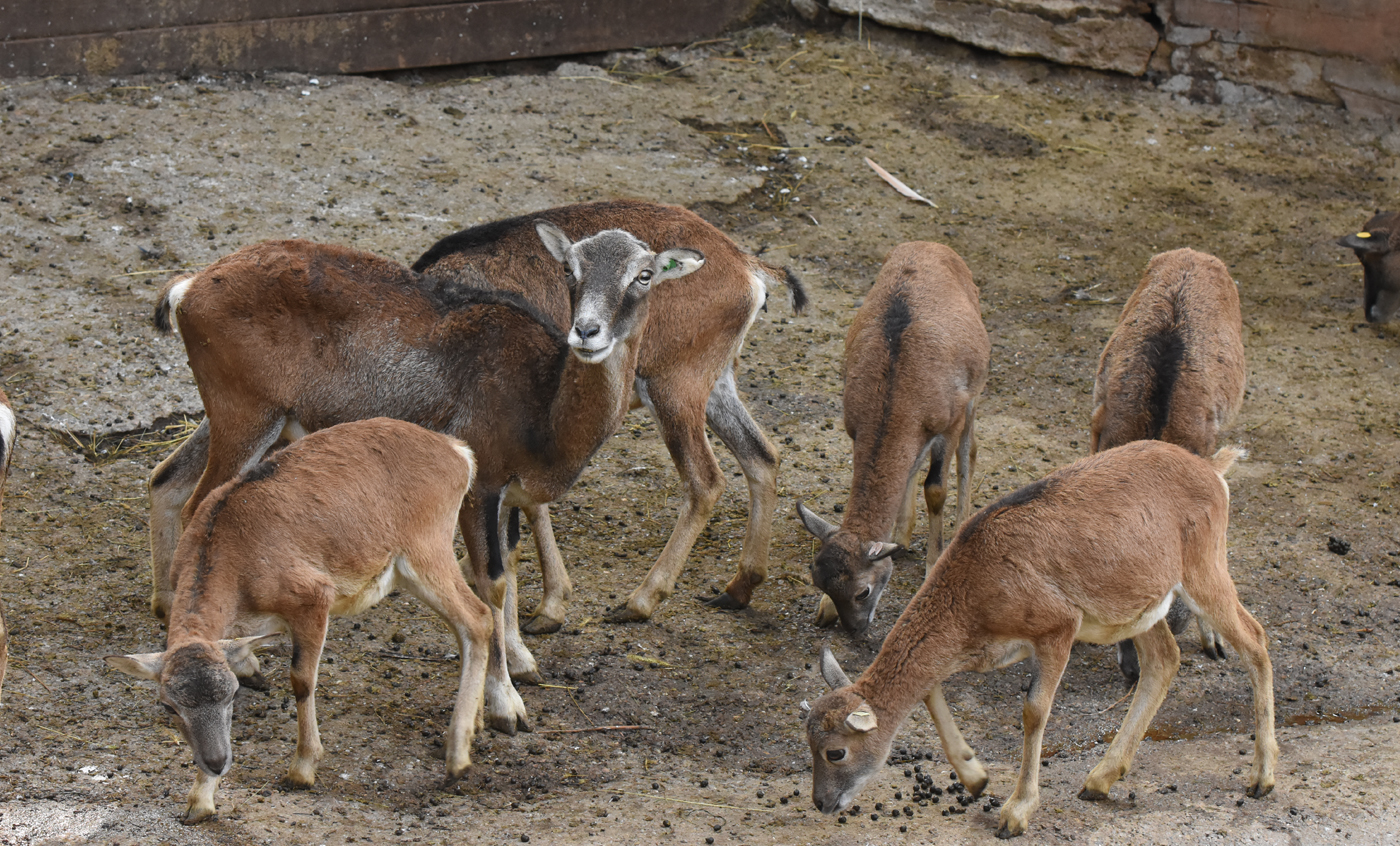Barbary sheep
The Barbary sheep is the only wild sheep living in Africa. It is easily recognisable by its brown fleece, heavy horns curving backwards that are present in both sexes, and, above all, the long hair falling from the neck, chest and front legs.
It lives in the dry, rocky mountains of the Sahara region in small groups. It usually shelters in the shade during sunlight hours and feeds on grass or leaves of bushes at dawn or dusk.
Natural habit
Northern Africa: Algeria, Morocco, Mauritania, Tunisia, Libya, Egypt, Mali, Niger, Sudan, Chad. Introduced to the United States, Mexico and Spain.
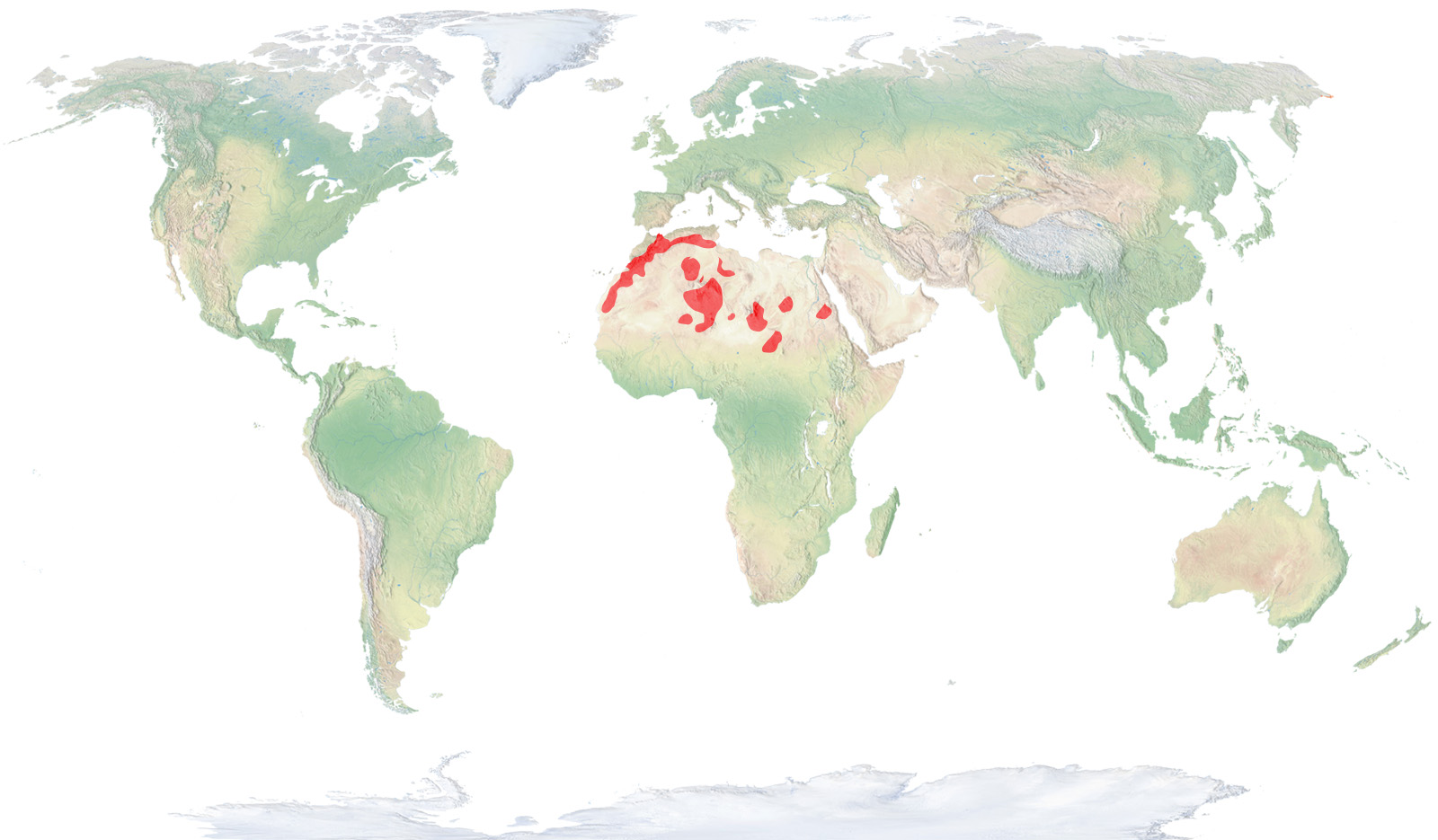
- Distribution / Resident
- Breeding
- Wintering
- Subspecies
Risk level
- Extint
- Extint in the wild
- Critically endangered
- In Danger
- Vulnerable
- Near threatened
- Minor concern
- Insufficient data
- Not evaluated
Taxonomy
Physical characteristics
Biology
Reproduction
Biology
It is characterized by its light brown hair, its thick horns curved backwards, present in both sexes, and mainly by its shaggy long hairs hanging from the neck, chest and lower limbs, sometimes reaching the ground.
Its natural habitat are the semiarid mountains of the Atlas and rock formations of different areas of the Sahara.
Its diet is constituted by lichens, grass, seeds and leaves from bushes and trees such acacias.
They reproduce at any time of the year, although they tend to mate between September and November. After a gestation of 160 days, the female usually gives birth to a single calf, often two. In captivity, some have lived up to 24 years.
It often lives in small family groups, led by an adult male, although during the dry season they can form more numerous groups with many tens of adult, young and new-born animals. It is usually more active during cooler hours and moves nimbly and confidently either in slippery and rocky surfaces.
In Africa this species is endangered due to overhunting, habitat degradation -caused by rapid desertification- and to hard competition for water and food, with domestic cattle.
On the other hand, it has been introduced in many countries, Spain among them, where populations have multiplied, to the point of becoming a threat to environment and native species. Barbary sheep, as a matter of fact, is listed in the Spanish list and catalogue of invasive alien species.
The subspecies in the Zoo is the Libyan Barbary sheep, Ammotragus lervia fassini, which only lives in a small bordering area between Tunisia and Libya.



